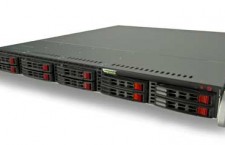The Green Computing Report explores Lopoco’s immense and exciting energy savings through their newly released line of energy efficient servers. From the article:
LoPoCo stands for Low Power Company. The hardware vendor, which emerged from stealth mode last month, offers a line of low-power consumption, ultra-efficient servers, aimed at helping businesses cut their datacenter operations bills by as much as 50 percent.

A self-proclaimed server nerd, LoPoCo CEO Andrew Sharp started his career as a corporate consultant, but making things is his passion. The impetus for the company goes back to 2010 when Sharp tried to acquire a server that was powerful yet easy on his energy bill. He soon realized the product he sought didn’t exist. At the power envelope he was after, the available offerings were woefully short in the performance area.
Sharp was compelled to create his own server line, focused on delivering maximum performance at minimum power. He joined forces with Chief Technology Officer Peter Theunis – and together they founded LoPoCo in 2010. After two years hunkered down on R&D, they began selling the new breed of servers.
Sharp thought it was important for those initial customer relationships to be in place before the company had its official coming out. He stays close with customers and uses the feedback to further hone the company’s product line.
The low-power servers are built for efficiency not pure performance. LoPoCo is not targeting HPC – although the HPC community could probably figure out some cool embarrassingly-parallel use cases – but that leaves a large swath of enterprise applications. The sweet spot, here, is for classic, server applications: Web serving, database, email, file serving, and Hadoop, any server application that is a mix of some ratio of CPU and I/O, according to Sharp.
LoPoCo is pushing its wares out to small companies and most notably early stage startups. Companies that operate their own datacenters will see the most savings:
“It takes a watt to cool a watt, so if you reduce your power consumption by 50 percent, you also reduce your HVAC power consumption by 50 percent,” remarks Sharp. “In the case of early stage startups, scaling back operating expenses can be the difference between making it to the next round of funding or not.”
CEO of Light and Motion Industries Daniel Emerson is among the satisfied customers. “We have purchased systems from Lopoco and all are performing flawlessly,” he reported. “We are also pleased with the power savings. I would recommend them to any small business looking to move off the power hogs that pass for servers these days.”
LoCoPo designs and builds the servers from the ground up to be power-efficient. While they are currently using standard x86 Intel chips, they are open to using other vendors (read: AMD) or other designs (read: non-x86).
“We are always looking for products that match the right tradeoff of performance and efficiency,” notes Sharp.
The CEO is interested in alternative architectures, but he says until 64-bit ARM v8 debuts next year, ARM is really “just a gimmick.”
Sharp also cautions customers to be careful not to lose the advantage of commodity hardware. “Typically proprietary designs end up adding risk and subtracting efficiency,” he says. “For some customers, it make sense, but for ultra-large datacenters, we’re dubious about the proposition.”
Understandably, Sharp doesn’t want to give away his trade secrets, but he says that the most efficient servers start with the most efficient processors. “What we don’t do is then build a server that sucks out all the efficiency gains presented by the processor,” he says.
“Our server that uses the most power, the LP-6200, has a Total Design Power (TDP) in the 110 watt range. Most servers are going to use more power than that at idle,” the CEO adds.
LoPoCo strives to be at least 50 percent better than the competition. “We are pretty mercenary when it comes to low-power consumption and efficiency,” says Sharp. “We don’t think that’s something that gives 20 percent better efficiency is really even worth talking about, most of our products are somewhere between 60 to 80 percent more power-efficient.”
Sharp also highlights the cool, quiet running of these machines that make them suitable for an office environment.
When it comes to the current state of datacenter principles, Sharp is concerned that the space is moving in the wrong direction. Datacenter architects are trying to get more and more power to the rack, and LoPoCo is suggesting a move in the opposite direction.
“It’s time to bring the idea of green computing instead of more power. Our philosophy is conserve. We need what we need, but don’t waste what we don’t need,” says Sharp.
While Sharp believes that LoPoCo’s products are a perfect match for the coming era of the software-defined datacenter, he affirms that they are antithetical to slice-and-dice server virtualization. As the load goes up and down, the LoPoCo servers save on power with a low TDP and low idle power usage.


